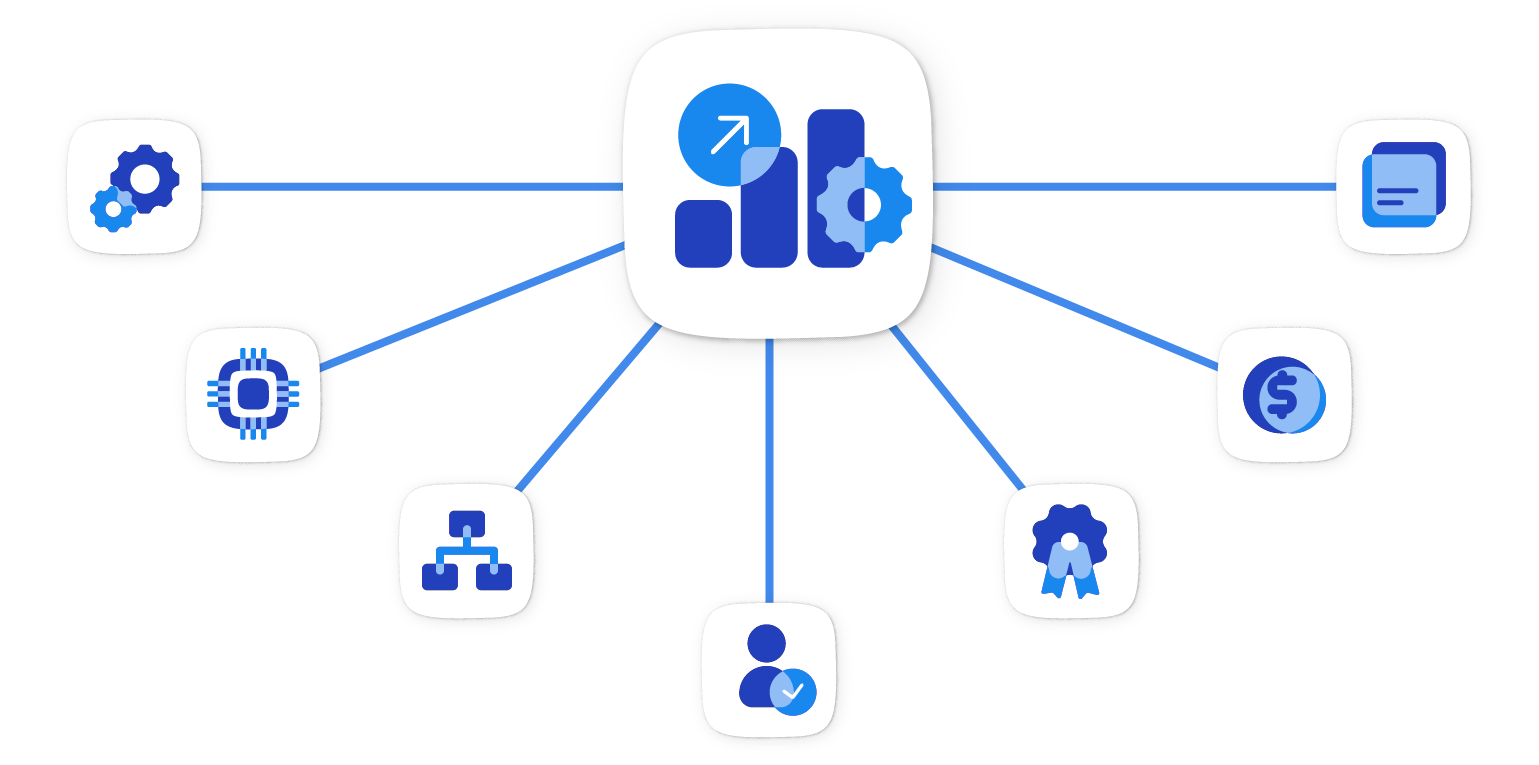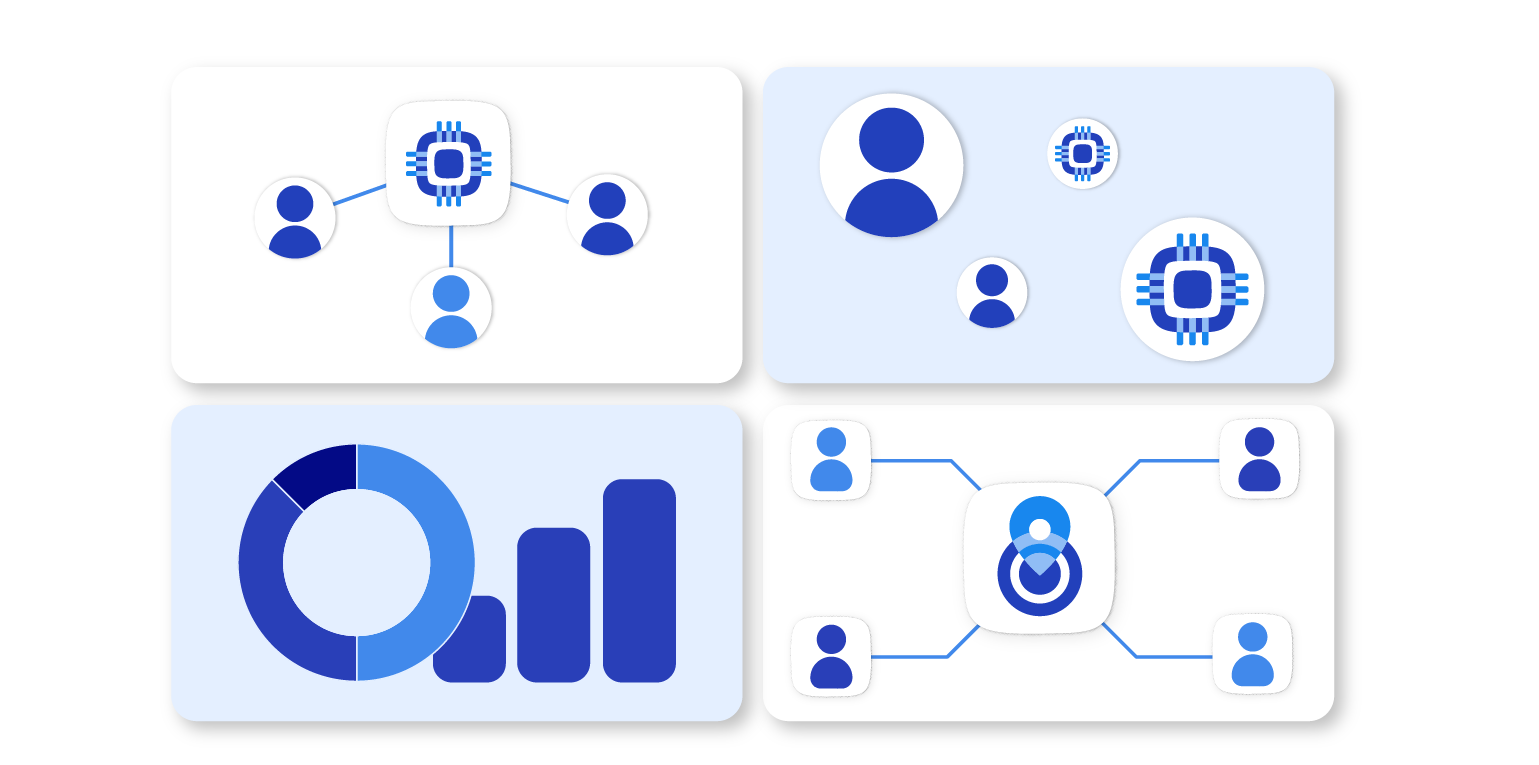As a business leader, you face new opportunities and challenges almost daily. Operational efficiency is something you can’t afford to overlook.
Efficiency has become a critical component of successful business management. This means using the latest technology, streamlining processes, and adopting a continuous improvement mindset to keep up with or pull ahead of the competition.
Embracing operational efficiency in this digital age isn’t just an option—it’s a necessity that will empower your organization to thrive in today’s rapidly evolving market.
In today’s article, we’re covering practical insights and strategies to guide you on this exciting and rewarding journey.
Understanding Operational Efficiency
Operational efficiency is the ability to deliver products or services to customers in the most cost-effective way possible — without sacrificing quality. It measures how well a business converts inputs such as labor, materials, and capital into outputs like goods, services, or revenue.
At its heart are several core elements:
Process Optimization
This involves continually improving business processes by minimizing waste, reducing errors, and leveraging technology. Lean and Six Sigma methodologies are most organizations’ “go-to”.
Technology Integration
Using modern technology to automate processes, reduce redundancy, and provide real-time data can significantly improve operational efficiency.
Supply Chain Management
Streamlining the procurement of raw materials, the production of goods, and the distribution of products helps reduce costs and improve efficiency.
Employee Productivity
Training and empowering employees, setting clear expectations, and providing the necessary tools can boost productivity and efficiency.
Quality Management
Implementing and maintaining standards ensures the products or services meet or exceed customer expectations.
Cost Control
Controlling and reducing operational costs through efficient resource utilization, waste reduction, and strategic sourcing can increase profit.
Performance Measurement
Using key performance indicators (KPIs) and metrics to track and analyze performance helps identify improvement areas.
How These Combine to Advantage Your Business
In the digital age, operational efficiency takes on even greater importance. Modern businesses are increasingly shifting to digital platforms, and operational efficiency ensures that this transition is smooth by optimizing digital processes to improve performance.
The growth of big data allows businesses to analyze vast amounts of information for insights, which makes efficient data handling essential for smarter decisions. Consumers today expect quick and seamless interactions through digital channels, and operational efficiency meets these expectations by providing a better customer experience.
The rapidly evolving digital landscape requires companies to adapt quickly, and operational efficiency through digital tools helps them maintain a competitive edge. This also includes implementing robust cybersecurity measures to protect sensitive data in an age of increasing cyber threats.
Thus, operational efficiency isn’t just about cost-saving in the digital era; it’s a sophisticated strategy essential for any company aiming to thrive today.
The Four Pillars of Operational Efficiency
At its core, operational efficiency has four pillars:
- Embracing the latest technology
- Streamlining processes
- Pursuing nonstop improvement
- Focusing on data-driven decision-making
These pillars form a framework that allows businesses to innovate, adapt, and thrive in an increasingly competitive market.
Embracing the Latest Technology
Contemporary tools like robotic process automation (RPA), business process management (BPM), artificial intelligence (AI), and intelligent automation have the power to revolutionize operations at an unprecedented rate.
RPA automates routine tasks, BPM aligns business processes with organizational goals, AI analyzes complex data and provides insights, and intelligent automation blends these technologies to create a cohesive and efficient workflow.
The integration of these tools enables businesses to streamline operations, reduce human errors, and achieve greater efficiency.
Streamlining Processes
Streamlining processes involves creating and implementing standardized protocols that eliminate bottlenecks and ensure consistency across operations.
By digitizing processes, organizations can achieve faster response times, lessen manual errors, and ensure that every part of the process aligns with overall business objectives. This approach ensures resources are used effectively, leading to reduced costs and improved customer satisfaction.
Nonstop Improvement
The concept of nonstop improvement emphasizes the continuous assessment and improvement of business processes. Methodologies like kaizen (the Japanese concept that inspired our company name) encourage a culture of ongoing improvement by fostering collaboration and constant changes and focusing on quality.
Rather than seeking massive overhauls, these methodologies promote small, continuous changes that add up over time, significantly improving efficiency, productivity, and quality.
Data-Driven Decision-Making
In the age of big data, using data analytics to guide decisions is essential. Analyzing data from various sources allows businesses to identify patterns that might go unnoticed.
This helps make informed decisions that align with organizational goals, reduce guesswork, and drive efficiency. By using data, companies can make smarter choices, optimize processes, and align their operations more closely with their overall strategic objectives.
Striking the Right Balance
Achieving operational efficiency requires not just the implementation of strategies and tools but also a delicate balance. It involves overcoming human resistance, balancing technology with human interaction, tracking efficiency through metrics, and aligning efficiency initiatives with the team’s vision.
Overcoming Resistance to Change
People often resist change, especially when it affects their daily routines or roles. Human-centric challenges can be addressed by implementing proven change management strategies such as communicating clearly, involving employees in the process, providing training, and offering support.
By showing empathy and understanding and creating a sense of ownership, organizations can minimize resistance, and change can be embraced more easily.
Balancing Tech with the Human Element
While technology can transform operations, complete reliance on it may lead to problems like a lack of personal touch or potential tech failures.
A balanced approach combining technological innovation with human insight and empathy ensures the technology serves the people and not the other way around. It emphasizes that while automation can handle many tasks, human judgment, creativity, and interaction are still important.
Tracking Efficiency
Measuring improvements in operational efficiency is essential to ensure that strategies are working. KPIs and other metrics like time-to-market, cost savings, customer satisfaction rates, and employee productivity must be tracked.
Regularly monitoring these metrics ensures the organization stays on the right path and adjusts as necessary to achieve goals.
Aligning Operational Efficiency Initiatives with Your Team’s Vision
Operational efficiency needs to match the organization’s broader objectives and culture. It requires clear communication of how efficiency initiatives align with the team’s vision, mission, and values.
Including team members in planning and decision-making helps everyone work toward the same goals and ensures that efforts fit well with the organization’s overall direction and way of doing things.
Real-World Outcomes
Improving operational efficiency has tangible effects on a company’s bottom line. Several organizations have faced challenges, implemented strategies, and achieved notable outcomes in fine-tuning their operations.
Toyota
Toyota aimed to streamline its production processes to reduce waste and enhance efficiency. By implementing the renowned Toyota Production System (TPS) and embracing principles like lean manufacturing and kaizen, they reduced production times and increased quality, establishing itself as a global leader in automotive efficiency.
General Electric (GE)
General Electric faced the challenge of improving asset performance and reducing operational costs. It adopted Predix, an industrial internet platform using data analytics. This change improved how it used its assets, which led to significant cost savings.
Procter & Gamble (P&G)
Procter & Gamble struggled with an extremely complex supply chain and high operational costs. It streamlined supply chain processes and implemented real-time data analytics, reducing inventory and saving billions in operating expenses.
Amazon
Amazon’s challenge was meeting customer demand for fast and reliable delivery. By investing in automation, AI, and sophisticated logistics planning, it achieved same-day delivery in many markets, boosting customer satisfaction and loyalty.
Delta Airlines
Delta Airlines focused on enhancing customer experience and operational responsiveness. It integrated real-time data analytics to track and predict maintenance needs, reducing flight delays and improving customer experience and operational efficiency.
These examples emphasize that companies investing in operational efficiency not only overcome challenges but also achieve measurable improvements in efficiency, cost reduction, and customer satisfaction. They are a compelling testament to the value of a well-executed operational efficiency strategy in today’s competitive business environment.
The Journey to Operational Excellence
Achieving operational efficiency is a complex process marked by significant changes, hurdles, and continuous adjustments. But remember that this transformation is a marathon—not a sprint.
You have to exercise patience and should invest time, effort, and financial resources into developing robust, efficient, and responsive operations. The challenges are substantial, but the rewards — including increased profitability, customer satisfaction, and competitive advantage — are worth the investment.
As you embark on this transformative journey, let Kizen be your operational excellence partner. Our expertise ensures you’re not navigating these waters alone. We’ll be your partner dedicated to aligning strategies with your unique needs and helping you realize your business’s full potential.
Connect with us today and take the first step toward a brighter, more efficient future for your business.










